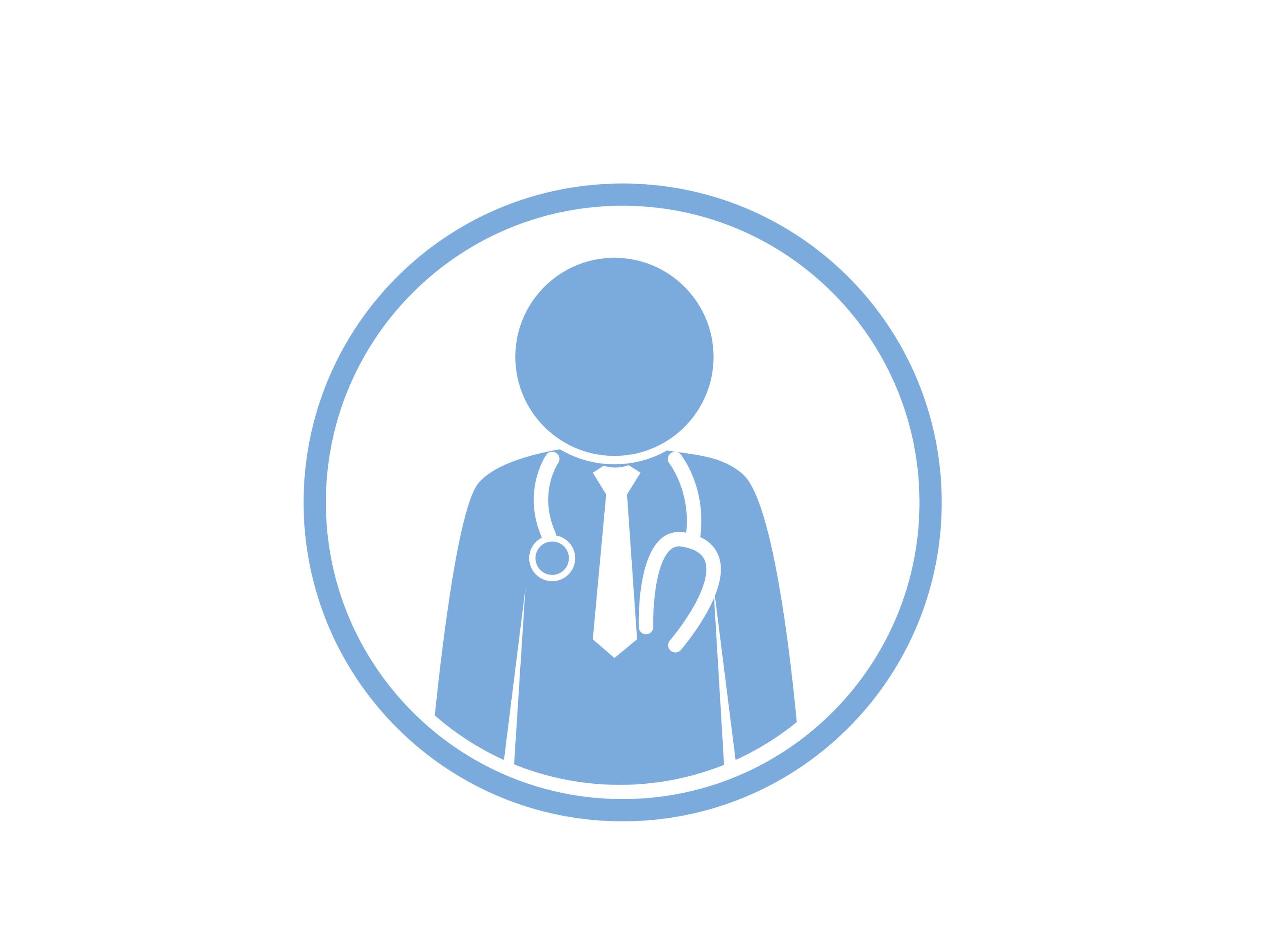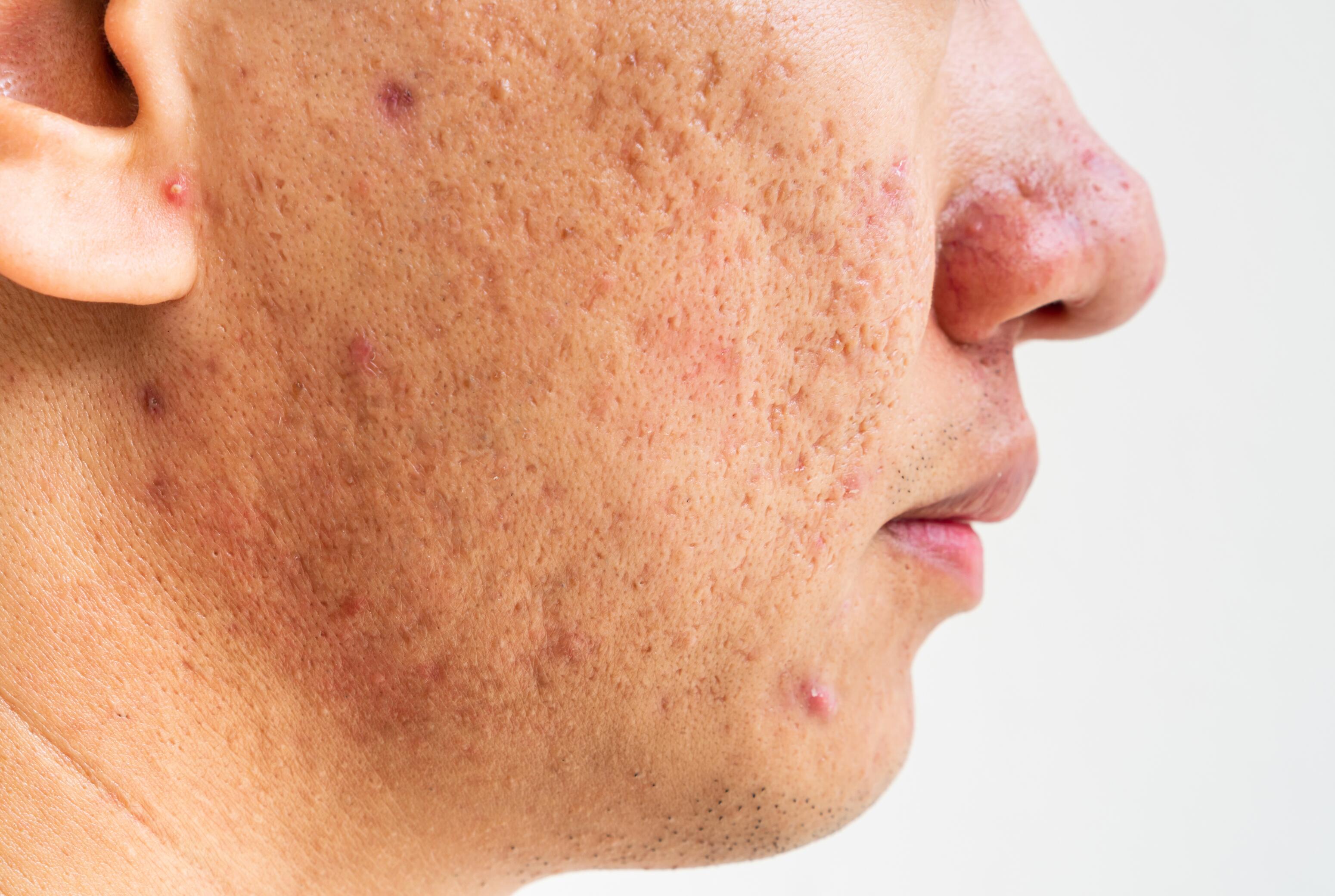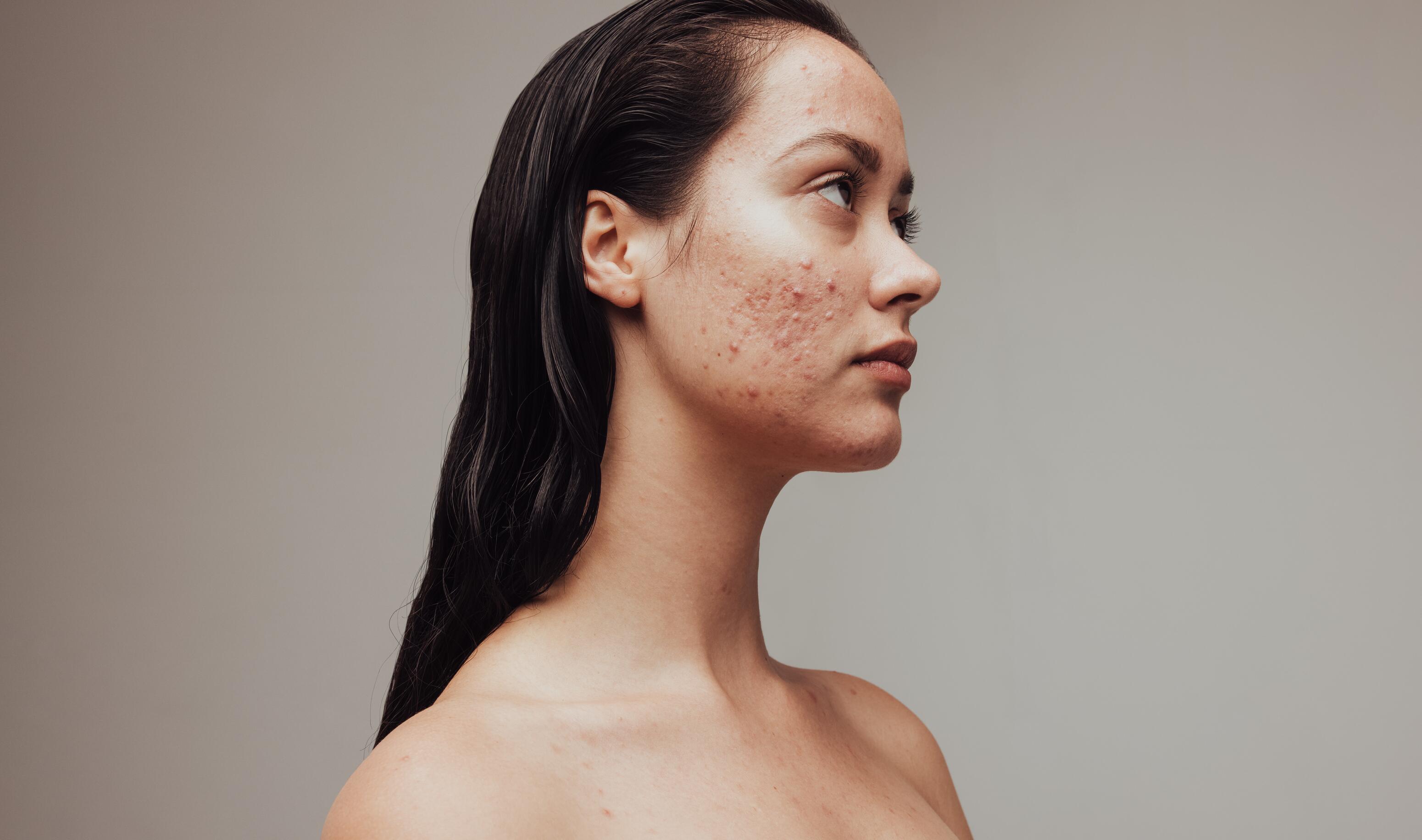Comprehensive guide to acne: causes, types and treatments

Summary
Understanding acne: definition and statistics¹ ² ³
Acne is a widespread chronic skin condition, especially among teenagers and young adults. It results from inflammation of the pilosebaceous unit, which consists of a hair and its sebaceous gland. This gland produces sebum, an oily substance that protects the skin. In acne, sebum is produced in excess and becomes thicker. Together with shed skin cells (corneocytes), it blocks the pores and encourages the proliferation of the bacterium Cutibacterium acnes (formerly Propionibacterium acnes).
These changes lead to the appearance of the characteristic lesions of acne.
In France, around 6 million people are affected by acne. 80% are adolescents or young adults aged 12 to 20 years, and 15–20% of these cases are severe. Although acne is usually linked to adolescence, it affects 25% of adults, especially women. The face is involved in 95% of cases, followed by the back (43%), neck (20%) and chest (20%).
Beyond its physical signs, acne has a significant psychological impact. Because it affects the face, it influences self-image and can hamper social interactions, particularly at pivotal stages such as adolescence or early adulthood. Treating acne, therefore, addresses not only physical discomfort but also mental well-being and body image.
The different types of acne and associated lesions¹ ² ³
Retentional acne
Retentional acne presents as oily, shiny skin with enlarged pores, open comedones (blackheads) and closed comedones (whiteheads or microcysts). These lesions result from an accumulation of sebum and dead skin cells within the pilosebaceous follicles.
Inflammatory acne
- Superficial
Superficial inflammatory acne occurs when comedones become inflamed, mainly due to the proliferation of Cutibacterium acnes. It appears as papules (red, non-purulent spots) and pustules (spots containing pus) on the affected areas.
- Deep
When the inflammation is deeper, acne is marked by nodules, painful, firm lesions beneath the skin. These nodules can progress to cysts (encapsulated lesions) and abscesses (if infected). Surgical treatment is sometimes required due to the high risk of scarring.
Acne conglobata
Acne conglobata is a rare, severe form of nodulocystic acne. Large comedones inflame rapidly, forming nodules and cysts that can merge and leave extensive scars. This acne affects the face, back, shoulders and buttocks and tends to follow a chronic course.
Acne fulminans
Acne fulminans is a rare, severe type of acne that mainly affects males. It presents as sudden eruptions of nodules and ulcerated lesions, accompanied by high fever and sometimes joint pain. This condition requires urgent, specialist care.
Severity of acne²
Dermatologists classify acne into four levels of severity:
Mild acne
Mild acne is characterized by a few comedones and spots, usually confined to less than half of the face. An overactive sebum production leaves the central “T zone” (nose, forehead, chin and cheeks) greasy.
Moderate acne
In moderate acne, comedones, papules and pustules appear on more than half of the face, and a single nodule may also be present.
Severe acne
Severe acne involves numerous comedones, papules and pustules spread across the entire face, together with several nodules.
Very severe acne
Very severe acne is marked by intense inflammation and large lesions covering the whole face. Deep, firmly anchored nodules lie beneath the skin, making this form particularly challenging to treat.
Mechanisms of acne formation² ³
Excessive sebum production
Acne often begins with sebaceous glands that are hypersensitive to androgen hormones. Under their influence, the glands produce excess sebum, leaving the skin oily and creating favorable conditions for bacterial growth. This surplus sebum blocks the pores and gives rise to the first comedones.
Follicular hyperkeratinisation
In acne, the skin makes too much keratin (the protein that underpins skin structure), so the outermost layer of the epidermis (the stratum corneum) thickens abnormally. Dead cells (corneocytes) build up in the hair follicle and, together with sebum, form plugs that prevent the natural sebum evacuation from the follicle. This process encourages the appearance of open comedones (blackheads) and closed comedones (whiteheads).
Role of the bacterium Cutibacterium acnes
Cutibacterium acnes (formerly Propionibacterium acnes) are normal residents of the skin flora, but in acne, they multiply excessively in blocked follicles. This overgrowth triggers immune responses that cause inflammation, leading to papules, pustules and sometimes nodules.
Inflammatory reaction and follicular rupture
Inflammation around the follicle traps sebum and attracts immune cells that release pro-inflammatory enzymes. If pressure mounts within the blocked follicle, its wall can rupture, spilling sebum and dead cells into the dermis and escalating the inflammatory response. This stage produces deeper lesions, such as nodules, and can leave scars if the inflammation is severe or prolonged.
Causes and triggering factors of acne¹ ³
Hormonal factors
Sebaceous glands are susceptible to circulating androgens (male hormones such as testosterone), leading to greater sebum production. Hormonal fluctuations—during puberty, pregnancy or the pre-menstrual phase—can worsen symptoms, especially in women. Endocrine disorders such as polycystic ovary syndrome (PCOS) are also associated with more severe acne.
Genetic influence
Family history plays a significant part in the onset and severity of acne. People whose parents had acne have a higher risk of developing a severe form, highlighting a strong hereditary component in sebum production and follicular inflammation.
Lifestyle and diet
Although the evidence remains inconclusive, a diet high in high-glycaemic foods and low in fruit and vegetables may promote acne. Foods rich in growth factors, like milk, may also stimulate sebum secretion. By contrast, the link between acne and chocolate remains- weak.
Psychological factors and stress
Stress can aggravate acne by:
- stimulating sebum production via substance P, a neurotransmitter released in response to stress
- encouraging people to pick or squeeze their spots.
Periods of tension and psychological pressure are therefore often linked to flare-ups of acne lesions.
Environmental and mechanical factors
External influences such as wearing occlusive clothing or equipment (headbands, helmets, rucksacks) can irritate the skin, block pores and promote acne. Repeated friction or using oily, comedogenic cosmetics can have the same effect.
Medicines and metabolic disorders
Certain drugs (e.g. steroids, lithium and some anticonvulsants) can trigger or worsen acne.
Symptoms and diagnosis of acne¹ ²
A clinical diagnosis
Acne is usually diagnosed based on a straightforward clinical examination and rarely requires laboratory tests. The clinician evaluates the type and distribution of lesions (comedones, papules, pustules, nodules) to determine the form of acne and its severity. A detailed medical history, including family background, age of onset, previous treatments, psychological impact and current skincare products, also helps guiding the diagnosis.
Screening for hyperandrogenism
In women, if there are signs of hyperandrogenism (excess body hair, menstrual irregularities, hair loss, weight gain), blood tests may be necessary to measure testosterone, LH, FSH and DHEA levels. A pelvic ultrasound also helps examine the ovaries. Such hormonal abnormalities remain uncommon.
Assessment in severe or fulminant acne
A complete assessment is recommended for the most severe forms, especially acne fulminans. Blood tests (complete blood count, liver function, C-reactive protein) and imaging investigations are sometimes necessary to gauge the extent of systemic symptoms and tailor management accordingly.
Age-related presentation of acne
Infantile acne² ⁴
Infantile acne generally appears between six weeks and twelve months of age and is more common in boys. It involves comedones (blackheads and whiteheads) along with inflammatory papules and pustules, mainly on the face and occasionally on the chest and back. Most cases are mild and clear spontaneously within six to twelve months without treatment. Severe forms, however, can leave scars and warrant medical follow-up.
Adolescent acne¹ ² ³
Acne is prevalent during adolescence, affecting around 80 per cent of young people aged 12 to 20 years2. Hormonal fluctuations at puberty stimulate excess sebum production and favor lesion development. The condition usually lasts three to four years and usually resolves spontaneously by 18–20 years1. It often has a significant psychological impact and can persist into adulthood. Dermatological follow-up and appropriate skincare help limit inflammation and scarring.
Adult acne² ³
Adult acne mainly affects women (25% of adult women in France²). It may represent persistent adolescent acne or arise de novo in adulthood, sometimes linked to endocrine disturbances such as hypersensitivity to androgens. Disorders like polycystic ovary syndrome (PCOS) can also trigger adult-onset acne. Lesions typically appear on the jawline, chin and neck and often fluctuate with the menstrual cycle. Management usually calls for specialist dermatological care and treatments tailored to the severity and underlying cause.
Differential diagnosis of acne³
Several skin conditions can be mistaken for acne because their lesions look similar, yet each has distinct features:
- Rosacea is a separate disease characterized by the absence of comedones and the presence of telangiectasias ( small dilated vessels).
- Perioral dermatitis presents as clusters of red papules around the mouth, sparing the lip border; this pattern contrasts with acne.
- Pseudofolliculitis barbae is an inflammatory reaction characterized by papules, pustules and scars in the beard area, mainly in patients with very curly hair.
- Sebaceous hyperplasia shows as tiny, yellowish, umbilicated papules, often on the forehead and cheeks.
Dermatological diagnosis of these conditions prevents confusion with acne and ensures that each receives appropriate treatment.
Acne treatments: options and recommendations¹ ³ ⁵
General principles and treatment modalities
Acne therapy is tailored to the severity and types of lesions. Regular follow-up is essential, as noticeable improvement typically takes two to three months. An ongoing maintenance regimen prevents relapse, and strict adherence to the prescribed routine is crucial for optimal results.
Topical treatments
- Creams and gels
Topical options include benzoyl peroxide and retinoids, often applied in the evening to minimize photosensitivity. Benzoyl peroxide provides antibacterial action and helps reducing inflammation, while retinoids normalize keratinisation and prevent new comedones from forming. Topical antibiotics are used only in combination with benzoyl peroxide or retinoids to limit the risk of bacterial resistance.
- Recommended dermo cosmetic products
Non comedogenic dermo cosmetic products formulated for acne prone skin are likewise indispensable. Gentle cleansing with a dedicated gel or lotion, followed by a nongreasy moisturiser, maintains skin balance without clogging pores.
Oral treatments
- Antibiotics
Oral antibiotics (tetracyclines such as doxycycline or lymecycline) are often prescribed for moderate-to-severe acne. Courses are limited to roughly three months to avoid resistance and are paired with a topical agent to enhance efficacy and curb resistance.
- Isotretinoin
In severe acne that resists well-conducted conventional therapy, isotretinoin is a last resort option. This medication demands close monitoring because of serious adverse effects, notably teratogenicity. Women of childbearing potential must use effective contraception before, during, and after treatment.
Hormonal treatments
Some combined oral contraceptives with low androgen activity can be offered to women who wish to use the pill and who are troubled by acne.
Prevention and treatment of acne scars⁶ ⁷
Preventive measures
To minimise scarring, treating acne at the earliest signs is vital, thereby limiting inflammation and deep lesions. Avoid picking or squeezing spots; this exacerbates inflammation and encourages scar formation. Daily sun protection is also essential, as UV exposure can darken scars. Choose a broad spectrum, SPF 30 or higher, non-comedogenic sunscreen suitable for acne prone skin.
Available treatments
Several options are available, according to scar type and severity:
- Skin resurfacing: chemical peels, microdermabrasion and lasers stimulate skin renewal and smooth superficial scars.
- Reconstructive techniques: surgical excision and the CROSS-technique prompt collagen production for deep scars.
- Filling techniques: hyaluronic acid injections or autologous fat (fats originating from the patient himself) fill depressed scars, evening the skin’s surface.
- Other treatments: cryotherapy and intralesional corticosteroid injections can reduce hypertrophic scars.
Impact of stress and diet on acne¹ ⁸

Influence of stress
Stress is known to trigger and worsen acne. In stressful situations, nerve cells near the sebaceous glands release a substance called “substance P”, which stimulates sebum production. This excess sebum can block pores and create an environment conducive to acne. Stress also increases the tendency to touch or pick at spots, further aggravating inflammation and raising the risk of scarring.
Role of diet
The effect of diet on acne remains a matter of debate, but some studies suggest that a high intake of high -glycaemic index foods (rich in rapidly absorbed sugars) and dairy products may be linked to more severe acne. Although additional- research is needed, avoiding excessive sugar, reducing snacking, and following a varied, balanced diet appear helpful in limiting acne.
Tips for better acne management
To mitigate the impact of stress, consider stress management practices such as meditation or yoga, and avoid touching lesions. On the dietary front, a balanced diet rich in fruit, vegetables, and lean protein should be favoured while restricting foods high in rapidly absorbed sugars (sweets, soft drinks, confectionery) and dairy products. Regular follow up with a dermatologist allows advice to be tailored to individual needs.

Psychological impact of acne and its management⁹ ¹⁰
Psychological consequences
Acne, mainly when it affects the face, can have profound psychological repercussions. Sufferers, particularly adolescents, are more likely to experience low self-esteem, anxiety and even depression. Emotional distress can arise even in mild cases, often accompanied by a negative body image and social withdrawal. Bullying and stigma linked to acne, especially at school, compound feelings of isolation and social difficulty.
Management strategies
Appropriate care is essential to reduce the psychological burden of acne. Alongside dermatological treatments, psychological support can help manage anxiety and improve self-image. If psychological distress persists, the assistance of a mental health professional may be beneficial, especially in severe cases involving depression and/or anxiety disorders.
Tips to prevent acne from worsening¹ ⁸
Good hygiene practices
Adopting a suitable skincare routine is vital to prevent acne from worsening. To avoid irritation, clean your face daily with a mild cleanser, such as micellar water, a specialised acne friendly gel or a soap free bar. Moisturise with a noncomedogenic cream, ensuring it suits oily or combination skin. Avoid abrasive scrubs and masks, particularly if using sensitising treatments like retinoids. Finally, choose noncomedogenic makeup and remove it thoroughly each evening with a gentle product to let your skin breathe.
Products to avoid
Some products can exacerbate acne and should be avoided. Rich creams, oils, leave on products, and mechanical scrubs can clog pores or irritate the skin, worsening lesions. If you use photosensitising treatments such as cyclines or benzoyl peroxide, protect your skin from the sun with a high protection sunscreen to prevent flareups, pigmentation and redness.
Avoid irritating products
Don't touch your face
No smoking
Balance diet
Everyday advice
Day to day habits can also help prevent acne from worsening. Avoid touching your face or picking at spots to limit bacterial spread and scarring. Adopt a healthy lifestyle by reducing stress and avoiding smoking. From a dietary perspective, a balanced pattern rich in fruit, vegetables, and fiber should be favoured while limiting rapidly absorbed sugars and dairy products, which may worsen symptoms in some individuals.

Acne during pregnancy: what you need to know¹
Acne in pregnancy varies widely: some women notice an improvement, others see little change, while for some the condition worsens. Treatment choices are limited to protect the developing foetus.
Finally, maintaining a suitable lifestyle, following your doctor’s advice and using an appropriate sunscreen are all essential for managing acne while pregnant.
When to consult a dermatologist or pharmacist about acne¹ ³ ⁸
Signs that you should seek advice
Consult a dermatologist if acne persists despite initial topical treatments and hygiene measures, or if it spreads and cysts or scars develop. Medical review is also warranted when redness around lesions or fever appears—possible signs of infection—and whenever acne causes psychological or social distress. Associated symptoms such as irregular periods or excessive body hair may indicate a hormonal imbalance that needs medical evaluation.
Preparing for the appointment
Before your consultation, note the treatments you have already tried, how your symptoms have evolved and any psychological impact. Recording potential aggravating factors, such as cosmetic use, dietary habits and stress levels, is also helpful to aid management.
Examinations and diagnostic tests
Diagnosis usually rests on clinical inspection of the skin. Additional tests may be necessary if signs of hormonal imbalance accompany the acne, such as measuring testosterone or other hormone levels in women. In acne fulminans, a more detailed work-up, including blood tests and liver-function tests, may be needed to tailor therapy and assess the risk of complications.

Sources
1. Jegou-Penouil MH. L’acné. Maladie du follicule pilo-sébacé. Société française de dermatologie. 2019 Dec. [Internet]. https://dermato-info.fr/fr/les-maladies-de-la-peau/l%E2%80%99acn%C3%A9
2. L’assurance maladie. Définition, symptômes et évolution de l’acné. Ameli.fr. 2024 May. [Internet]. https://www.ameli.fr/assure/sante/themes/acne/definition-symptomes-evolution
3. Sutaria AH and al. Acne Vulgaris. Treasure Island (FL): StatPearls Publishing; 2024 Jan. [Internet]. https://www.ncbi.nlm.nih.gov/books/NBK459173/
4. Poole CN, McNair V. Infantile Acne. Treasure Island (FL): StatPearls Publishing; 2024 Jan. [Internet]. https://www.ncbi.nlm.nih.gov/books/NBK541124/
5. L'assurance maladie. Le traitement de l’acné. Ameli.fr. 2024 May. [Internet]. https://www.ameli.fr/assure/sante/themes/acne/traitement
6. Fabbrocini G and al. Acne scars: pathogenesis, classification and treatment. Dermatol Res Pract. 2010;2010:893080.
6. Connolly D and al. Acne Scarring-Pathogenesis, Evaluation, and Treatment Options. J Clin Aesthet Dermatol. 2017 Sep;10(9):12-23.
7. L'assurance maladie. Acné. Que faire et quand consulter. Ameli.fr. 2024 Jun. [Internet]. https://www.ameli.fr/assure/sante/themes/acne/bons-reflexes-bons-gestes
8. Oakley A and al. Psychological effects of acne. DermNet. 2014 Feb. [Internet]. https://dermnetnz.org/topics/psychological-effects-of-acne
9. AAD. Acne can affect more than your skin. American academy of dermatology association. [Internet]. https://www.aad.org/public/diseases/acne/acne-emotional-effects
- Discover Complete Guide to Treating Acne: Causes, Types and Solutions
Complete Guide to Treating Acne: Causes, Types and Solutions
- Discover Acne and Sun Exposure: Effects and Recommended Actions
Acne and Sun Exposure: Effects and Recommended Actions









